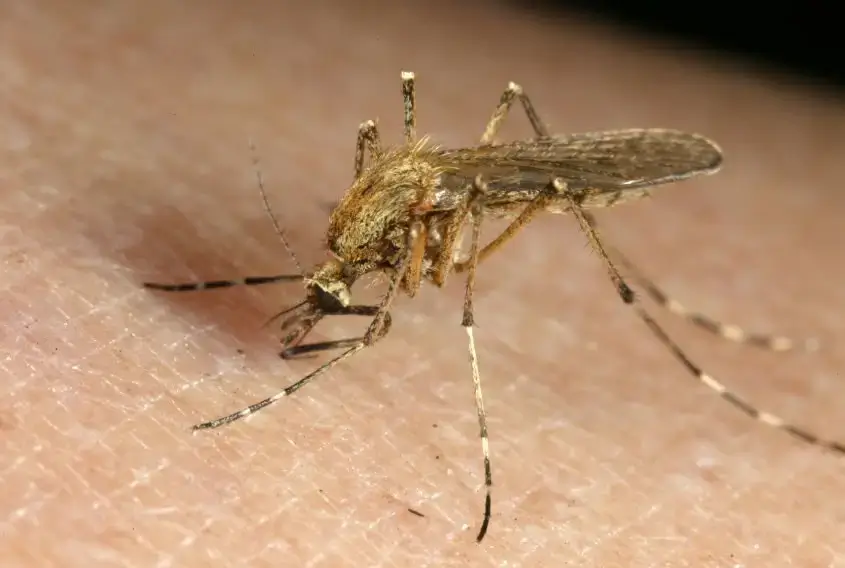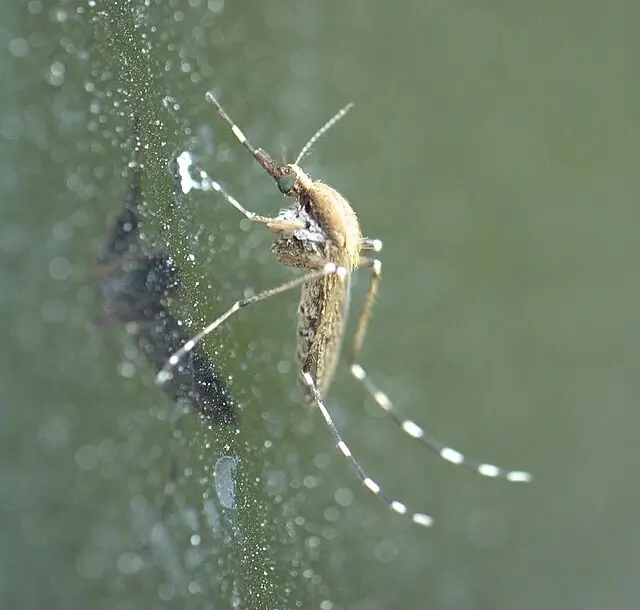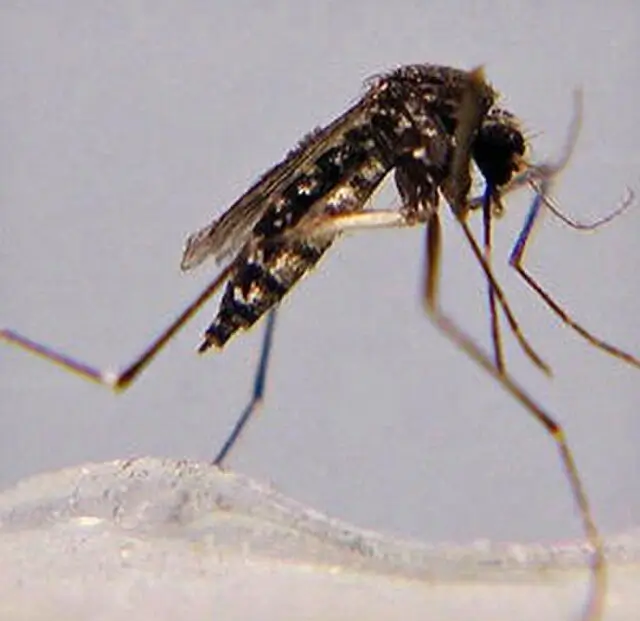
Marsh Mosquito Identification
Table of Contents

Marsh mosquitoes, including species like Aedes taeniorhynchus and Aedes sollicitans, are commonly found in coastal salt marshes and tidal wetlands. These aggressive saltmarsh mosquitoes are most active during the day and are known for traveling long distances in search of a blood meal. While A-1 Pest Control does not treat for marsh mosquitoes due to their specific coastal habitat, we’ve included this information to help you understand how these species differ from the mosquitoes more commonly found in Western North Carolina.
Scientific Names: Aedes taeniorhynchus and Aedes sollicitans
Also Known As: Salt Marsh Mosquitoes, Coastal Marsh Mosquitoes
Quick Facts Table:
| Characteristic | Details |
| Size | ~4–6 mm (slightly larger than common house mosquitoes) |
| Color | Dark-bodied with white leg and body banding (varies by species) |
| Lifespan | ~10–14 days (depending on climate and breeding conditions) |
| Active Months | Spring through fall; peak activity during summer and post-rainfall |
| Preferred Habitat | Coastal salt marshes, swamps, flood-prone lowlands, and tidal wetland zones |
What Are Marsh Mosquitoes?
Marsh mosquitoes are a group of mosquito species adapted to thrive in coastal salt marshes, swamps, and flood-prone zones. These mosquitoes are especially problematic in southern regions, such as Coastal North Carolina, where high tides, warm weather, and seasonal rains create ideal breeding habitat conditions.
Two key players in this category are the summer salt marsh mosquito (Aedes sollicitans) and the black salt marsh mosquito (Aedes taeniorhynchus), both known for their aggressive biting behavior and strong flight capabilities. These females are capable of traveling extremely long flight distances—sometimes over 20 miles from the nearest coastal swamp.
Identifying Salt Marsh Mosquitoes
Proper mosquito identification is crucial for effective treatment. Both aedes taeniorhynchus and aedes sollicitans are dark-colored adults with distinctive white banding on their legs and bodies. The black salt marsh mosquito tends to have fewer white scales, whereas the summer salt marsh mosquito features more vivid markings.

Aedes sollicitans (Summer Salt Marsh Mosquito)
This golden-brown mosquito features bold white banding on its legs and is commonly found in coastal marshes, where it bites throughout the day.

Aedes taeniorhynchus (Black Salt Marsh Mosquito)
Recognizable by its dark body with subtle pale markings, this species is a strong flier and known for its aggressive daytime biting.
Do Marsh Mosquitoes Bite?
Yes—marsh mosquitoes are notorious for their painful, persistent bites. Unlike some other mosquitoes, adult female mosquitoes from salt marsh mosquito species are aggressive biters that readily bite humans during both the day and early evening. Their primary motivation? A blood meal necessary for producing eggs.
While mosquito bites from these species typically result in localized itching and swelling, they can also pose more serious health threats.
What Diseases Do Marsh Mosquitoes Carry?
Several marsh mosquito species are considered secondary vectors for serious diseases. The black salt marsh mosquito, in particular, has been linked to dog heartworm, Western equine encephalitis, and even transmitting malaria under specific conditions. The summer salt marsh mosquito is also a known secondary vector for Venezuelan equine encephalomyelitis virus in some regions.

Although they are not the primary culprits like aedes aegypti, these aedes mosquitoes are still a considerable public health concern in the right environmental context.
Aedes taeniorhynchus (Black Salt Marsh Mosquito)
This dark-colored mosquito is known to travel long distances and bite aggressively. While not the main spreader of most diseases, it can still transmit several harmful ones in the right conditions:
- Dog Heartworm: Can infect dogs through mosquito bites and lead to serious heart and lung problems if untreated.
- Western Equine Encephalitis (WEE): A rare virus that can affect both humans and horses. In people, it can cause flu-like symptoms and, though uncommon, more serious brain inflammation.
- Malaria (under rare conditions): Though not a usual carrier in the U.S., this mosquito has been shown to transmit malaria in lab settings or specific environments.
Aedes sollicitans (Summer Salt Marsh Mosquito)
This golden-brown mosquito is most active during the day and also bites fiercely. Like its black counterpart, it isn’t the primary carrier of most diseases but can still contribute in some cases:
- Venezuelan Equine Encephalomyelitis (VEE): This disease mostly affects horses but can occasionally spread to humans, causing flu-like symptoms and, in rare cases, neurological issues.
- Dog Heartworm: Also capable of spreading this disease to pets through its bite.
⚠️ These marsh mosquitoes aren’t the biggest threat compared to species like Aedes aegypti, but in areas with large populations, like coastal or swampy regions, they can still pose health risks, especially for pets and horses.
Where Do Marsh Mosquitoes Live?
These mosquitoes are most often found near coastal salt marshes, estuaries, mangroves, and even dry ground adjacent to periodic flooding zones.
Their larval habitat includes salt-tolerant wetlands, ditches, and grassy lowlands. They also breed in standing water, storm surge areas, and fresh water sources near tidal zones. The availability of suitable mosquito larval habitats and warm ambient temperatures contributes to large, active populations.
The Life Cycle of Salt Marsh Mosquitoes
The life cycle of a salt marsh mosquito begins when female mosquitoes seek out a blood meal before laying eggs. These eggs, often laid singly on moist soil, can survive dry periods for weeks or months, waiting for high tides or rainfall to trigger egg hatching.

Most marsh mosquito species prefer breeding sites in or around coastal salt marshes, but some will lay eggs in manmade containers, fresh water ditches, and standing water left by high tides. These eggs are laid singly, sometimes on dry ground, and require flooding to activate larval development.
The larvae, also called wrigglers, go through four distinct stages, with the fourth instar being the final developmental stage before pupation. Fourth instar larvae grow larger as they prepare to enter the pupal stage, ultimately emerging as adults when water conditions and ambient temperature are at their peak. In many marsh mosquito populations, adults emerge in large waves following tidal events.
When Do Marsh Mosquitoes Feed?
One of the more troubling traits of saltmarsh mosquitoes is their time feeding. Unlike most other mosquito species that feed at dawn and dusk, aedes sollicitans and female aedes taeniorhynchus will bite aggressively day and night, especially during humid or overcast weather.
This behavior not only increases the chances of contact with humans but also makes prevention much more difficult without professional intervention.
Frequently Asked Questions
Do Salt Marsh Mosquitoes Carry Disease?
Yes. While they are often secondary vectors, salt marsh mosquito species like Aedes taeniorhynchus and Aedes sollicitans have been linked to the spread of Western equine encephalitis, dog heartworm, and are capable of transmitting malaria under certain conditions.
Where Are Salt Marsh Mosquitoes Most Common?
They are found near coastal salt marshes, tidal zones, and wetland systems in southern regions including Florida. Look for activity near the nearest coastal swamp, especially after seasonal rains or high tides.
When Do Adults Emerge?
Adults emerge soon after egg hatching, typically following rainstorms or tidal flooding. You may notice large swarms appear seemingly overnight, especially in summer months when higher temperatures accelerate development.

